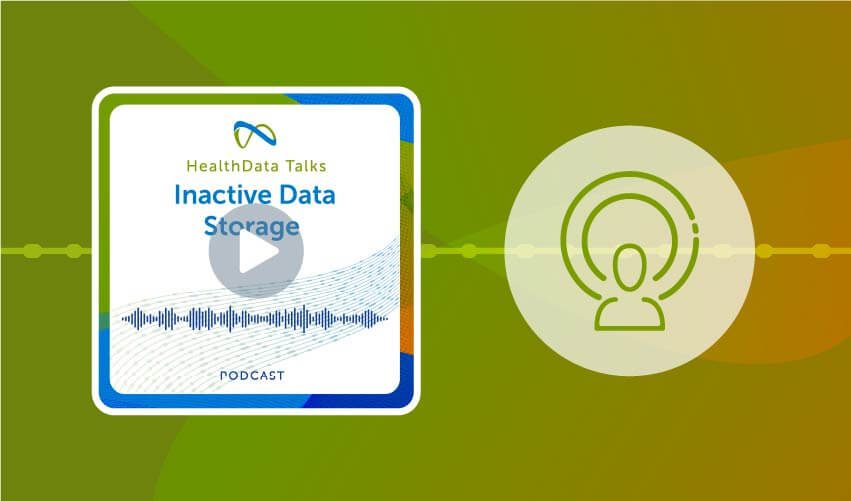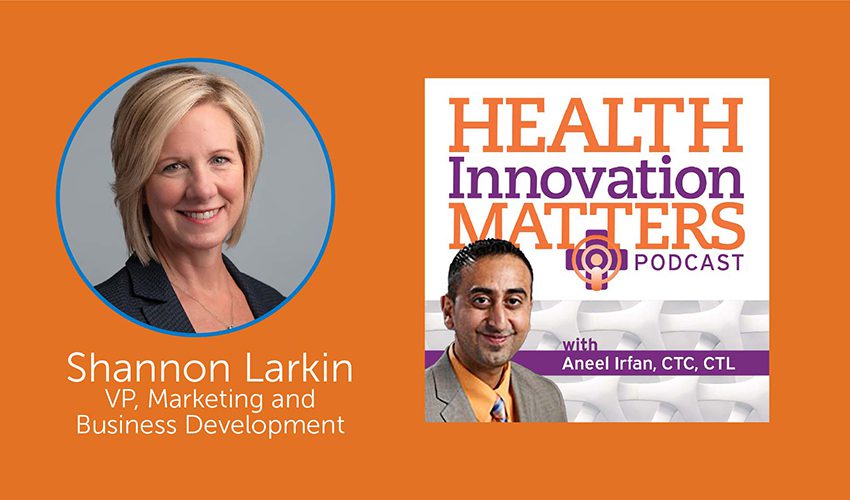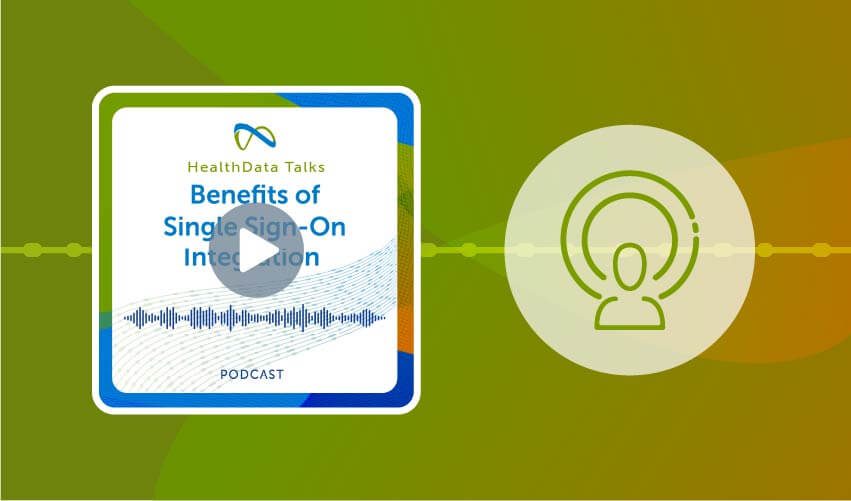HealthData Talks: ONC Reorganization & HTI-2
This HealthData Talks episode covers recent ONC updates, including the new ASTP/ONC restructuring and the HTI-2 rule. Dave Navarro, Senior Director of Data Science ay Harmony Healthcare IT, emphasizes the importance of healthcare data vendors aligning with ONC recommendations to facilitate data exchange and access.
Subscribe
You can subscribe to the HealthData Talks Podcast on Spotify, Amazon Music, Apple Podcasts and more.
[00:00:02] Dave: Welcome to HealthData Talks, where industry experts offer bite sized tips and trends for managing legacy data.
[00:00:12] Amy: Thank you for being here, Dave.
[00:00:15] Dave: Thanks for the invitation and happy to be here today.
[00:00:19] Amy: So, Dave, you’re always one of my favorite guests to talk about some of the things that we do and apply in our world of extracting, migrating and storing records for healthcare organizations. You really have a strong background and knowledge in the interop space. And I know we talked a lot about the 21st Century Cures act. The activation of the data that we’re storing has become even more important in that regard, especially how we’re readying it for interoperability. And so that’s our topic today for us to dive into. So, to get started, can you start by introducing yourself a little bit and your background?
[00:00:53] Dave: Sure. And as you’ve already mentioned, my name is Dave Navarro. I’m the senior director of data science here at Harmony Health. It so what does that job title actually mean? Well, I’m responsible for the overall strategy of what data elements we store for our customers legacy applications. So, when we think about data strategy, we want to consider all the possibilities. We want to make sure that we’re aligning with our customers business objectives as well as looking beyond to other use cases for their data. So, for example, as it relates to historical data, a customer’s main concern may be the visualization of key data elements and a nice front end application such as HealthData Archiver®. But sometimes they may not consider the activation of this data. Does that data that they’re archiving meet USCDI minimal data requirements for interoperability? And also, how do those data elements have, do they have related clinical concepts such as SNOMED lOINC codes or RX norm codes that may not necessarily be displayed in the front end of the application, but those things are very important when their business needs evolve and includes activities such as data analytics and other use cases.
[00:02:12] Amy: It’s very true. So, let’s discuss some recent news that’s affecting this space. The ONC has recently announced that they will be restructuring, which has resulted in changing their name from the Office of National Coordinator for Health it to ASTP ONC, which stands for the Assistant Secretary for Technology Policy and Office of the National Coordinator for Health Information Technology. So, pretty long name there. Can you offer some commentary around that, Dave?
[00:02:43] Dave: Yeah, so this is some really big news. The fact that we’re all getting email notifications of ONC webinars surrounding this announcement really shows how important it really is. So, I don’t want to bore our audience too much today, which a bunch with a bunch of different government office acronyms. So, I’m just going to highlight at a very high level what this announcement means. First, it means that the Department of Health and Human Services, or HHS, they continued to prioritize improving healthcare for everyone through the adoption of healthcare techniques. I like to think of the ONC is kind of a nuts and bolts type of organization. This organization is really the what and the how. Meaning what do I need to do to promote interoperability and data exchange? And what are the minimum requirements for my health care? It also, how. How do I get all of this done? What rules and specifications, programs or policies should I follow? So, the oversight of these activities had previously existed in a separate group called the Assistant Secretary for Administration, or ACA. So, with this new reorg, the oversight portion of technology, data and AI policy is going to shift closer to the ONC under that new name you had mentioned, Amy, which is that ASTP ONC organization. Again, that ASTP stands for Assistant Secretary for Technology Policy.
Really bringing that oversight, those oversight activities and the ONC activities under the same umbrella. There’s also a move to shift cybersecurity efforts to a group called ASPR or the Administration for strategic Preparedness and Response. If you’re not familiar with this group, it’s the office that’s responsible for protecting the nation from public health emergencies and disasters. Again, this is a real big indication that HHS is really elevating cybersecurity to a new level. I really think these moves to consolidate offices are really that administrative step to facilitate that overall goal of improving healthcare through technology.
[00:05:06] Amy: It’s definitely been interesting to watch what’s come out of these organizations over the last few years and how they’re adapting to kind of what’s happening in the industry.
Dave, what is the latest rule that’s been set forth by the ONC? And really, first off, what is a rule?
[00:05:22] Dave: Great. We’re touching on ONC rules. So, if you don’t know what a rule is, basically it’s a regulation established by the ONC that helps promote the adoption and the exchange of electronic health information.
So, with that being said, the latest proposed proposed rule is HTI-2, which was released on August 5 of this year. This rule proposes several new regulations, but I wanna focus on a couple of the key proposals in this rule. One of the first things it does is it proposes the adoption of the updated US CDI version for data content specification. And what this means is it’s really increasing the amount and the type of data that’s available to be used to exchange through certified health it solutions. It also establishes an expiration date for the old version of USCDI, which was USCDI version three. That expiration date is January 1 of 2028.
Another thing that this proposed rule does is it touches on everyone’s favorite topic, which is information blocking.
The proposed rule seeks to add clarity to some of the terms around healthcare provider and really what specific type of laboratories and or pharmacists are considered healthcare providers. So, it does those two things. But one of the most impactful things I think of this new rule is the adoption of new FHIR APIs for payer access. So, the ONC is really leaning into the ability to have healthcare data follow a patient when they switch insurance carriers. This really hones in on that coordination of care and benefits which hasn’t been previously addressed in any previous rules. And one of those last things about the HTI-2 proposed rule is again the final comment period for this rule ends on October 4 of 2024. So I would encourage everyone to go out and read and provide feedback to this ONC rule.
[00:07:32] Amy: And Dave, where would people do that?
[00:07:35] Dave: You can go to healthit.gov and look up the proposed rule and right underneath there, there’s a link so that you can comment on that rule.
[00:07:45] Amy: Okay. So, you know, as we are a healthcare software vendor, we’re always attempting to align our products with the recommendations the ONC puts out for healthcare it can you talk more about how we as a company keep up with emerging emerging. Can you talk more about how we keep up as a company with emerging industry requirements?
[00:08:07] Dave: Yeah, I mean, we keep on mentioning the ONC over and over again and we mention it, or I mention it because it is a great resource. So, if we think back to 2009 when the high tech act came along, the ONC really sought to establish a common set standards to promote EHR use and interoperability, security and other things. So, over the years, that has really morphed into what the ONC certified health it program is today. So, the ONC certified health it program is really a voluntary program established by the ONC to ensure that healthcare it products, they meet specific standards and functionality requirements. I know some of us around the technology space, we may find these standards burdensome at these times, but the guidance that this program provides really serves as a guiding light for those of us who are building and implementing technology solutions. For those of us who’ve been around for a long time implementing older versions of HL7, version two, and custom APIs it was kind of like the wild, Wild west back then. We each had our own opinions on which implementation or specification was better for exchanging data. Now we can refer to what does the ONC program recommend. So even though HealthData Archiver® may not fit perfectly into that ONC certified hit program, we certainly want to lean into this program and understand the baseline of functionalities that our customers expect for interoperability and really lean into those pieces of the program that facilitate access to historical data.
[00:09:50] Amy: So, can you talk a little bit about the ways Harmony aligns our functionality with the certified health it program?
[00:09:57] Dave: Sure. So that certified health it program, it’s kind of geared more towards active EHRs. But as an archived vendor, we really store the same types of data that are stored in active EHRs. We store problems, allergies, medications, lab results, diagnostic reports, and all that other type of clinical data. So, it really makes sense that we follow the same methodologies when it comes to storing historical data as customers would do when storing their active data.
Specifically, one of the things that we do to align with the certified health it program is we recommend a baseline data content standard. So, we recommend to our customers that they store the minimum data defined in the latest USCDI specification. Implementing this baseline really ensures that our customers are working with a common set of data elements and definitions across their many archive systems. It really also helps meet minimal interoperability standards when they start to exchange or request this data from the archive. This really leads me into talking about integration and interoperability. We’ve all heard talk of FHIR, so FHIR stands for fast healthcare interoperability resources. Basically, it’s a comprehensive data specification on how you transmit all the different types of clinical data. So, what we try to do is focus on providing interoperability via the us core FHIR implementation guide. This specification really gives us a roadmap on the baseline level of interoperability that our customers are expecting. There’s a lot of criteria that the program covers, such as data encryption, security and auditing, that we also are very conscious in aligning ourselves with.
[00:11:52] Amy: So, Dave, you’ve been around this for a long time. What would you consider some of the criteria that is most relevant to archiving data specifically?
[0:12:02] Dave: Well, that’s a hard choice, cause there’s a lot of criteria, but I think in our sector of historical data archiving, I might choose a couple. First and foremost is security. There are a lot of criteria in the program that relate to security. We always want to make sure that our data is secure and encrypted as well as providing secure access to that data, and then following closely behind that is standardized data access via APIs. It’s important that we remove all barriers to the access of data, including archive data. And the way to do that is through these FHIR APIs, which we are actively developing.
[00:12:47] Amy: So, let’s talk a little bit more about FHIR, which is a common term in healthcare. It, like you said, including the archiving space, interoperability is a common term as well. And those two go hand in hand. What does that mean for an archiving vendor like us?
[00:13:03] Dave: First off, I am a huge fan of the FHIR specification. It’s really the evolution of healthcare interoperability over the past, past 30 years. It’s an open source standard that’s community driven and constantly evolving. So, I encourage everyone listening to navigate to HL7.org and click on that HL7 FHIR standard link to explore that specification. Amy, to specifically answer your question, what does FHIR mean for archive vendors? It really means the ability to activate data like we never have been able to before in the archive space.
[00:13:43] Amy: So, Dave, what does that mean? What does it mean by activating data?
[00:13:48] Dave: Well, what I mean by this, Amy, is that in today’s world, a clinician is really relying on a separate step to actively search an archive for patient data. They may be able to single sign onto that application, but once they’re in that data, once they’re in that application, the data is presented in a separate window pane. It may be viewable, but it may not necessarily be able to be consumed by their EHR.
As we move into further adoption of FHIR, what I see is a world that searching for a patient is really a FHIR API request to the archive, and then that data is physically transmitted back to the EHR for viewing and consumption. Now, we can only get to this last step of consumption if we’re all using the same data format, which again is the FHIR specification. We can only get there if we’re all playing by the same interpretation of the rules. Again, leaning onto that FHIR specification. Once you’ve achieved that type of data access, you can start to build an ecosystem of applications that you can use to connect and visualize historical data on demand. For example, an EHR may want to build an application to access and visualize historical data related to a certain admitting condition. So, an application could be developed to query a certain type of blood test, previous diagnosis, or conditions really relating to an admitting diagnosis of chest pain. Those possibilities are endless. We just really have to lay the groundwork for it.
[00:15:31] Amy: I know we all look forward to getting to that point. So, we’ve covered a lot of ground today. To wrap up, what would you say are the three key takeaways from the latest ONC updates?
[00:15:42] Dave: Amy I would say the key takeaways is first, we really want to understand the regulation landscape and use the ONC as our guide. The healthcare it landscape is very complex and it’s far reaching. It’s really tough to get a handle on what you should be focusing on. The resources at Healthit.gov from the ONC, they really help summarize the latest proposed regulations and give us a map of areas to focus on. Next, I want to talk about active participation. We talked a little bit about this earlier. You want to make sure that you’re actively participating in rulemaking. For example, the latest proposed rule that we talked about, HTI-2 the commenting period. The public commenting period is open until October 4, 2024, and HHS really does take stakeholder comments into account when they’re finalizing these rules. Lastly, I say become a novice at interpreting the FHIR specification. I know that a lot of our audience may not be technical, but I encourage you to look at the FHIR specification. It’s completely online and it really helps me out in a lot of different ways. If I have a customer, for example, who’s seeking to store information about implantable devices, I may not really be familiar with that, but I can go to the FHIR specification and really quickly, I can take a look at all the known data elements that HL7 has been keeping track of over the over the last 30 years. So, it’s really helpful in identifying and organizing information.
[00:17:24] Amy: Thank you, Dave, for joining us. I learned a lot. As always, you do a great job of summarizing a lot of things that are happening in this space that the industry needs to be aware of and decide how they want to react to. So, appreciate the concise overview.
[00:17:41] Dave: Thanks Amy and I enjoyed talking with you today.
[00:17:43] Amy: And to our audience. Thanks for listening as always, and join us next time for a more meaningful discussion around the management of health data.
[00:17:53] That’s it for this session of health data talks. Check out helpful Resources@harmonyhit.com and follow us in your favorite podcast app to catch future episodes. We’ll see you next time.
Speakers
Host:
Amy Holmes, Director of Marketing, has gained over 15 years of diverse marketing experience. At Harmony Healthcare IT, she is responsible for all aspects of marketing, helping connect the healthcare market with our legacy data management solutions.
Guest:
David Navarro, Senior Director of Data Science at Harmony Healthcare IT. David has over 22 years of health information technology experience in Integration and Health Information Exchange. In his professional career, David has focused on data quality, data insights, and interoperability. He has implemented hundreds of interfaces between clinical and financial systems utilizing a variety of integration platforms, custom ETL processes, and nationally accepted standards. He continues to drive interoperability initiatives and focuses on the curation and accessibility of data in the healthcare ecosystem.
Related Resource Links
Discover HealthData Integrator®
Follow us
LinkedIn: @Harmony Healthcare IT, the Makers of HealthData Archiver®
Twitter: @HarmonyHit
Ready to connect?
Contact us today to learn more about our healthcare data management solutions.












